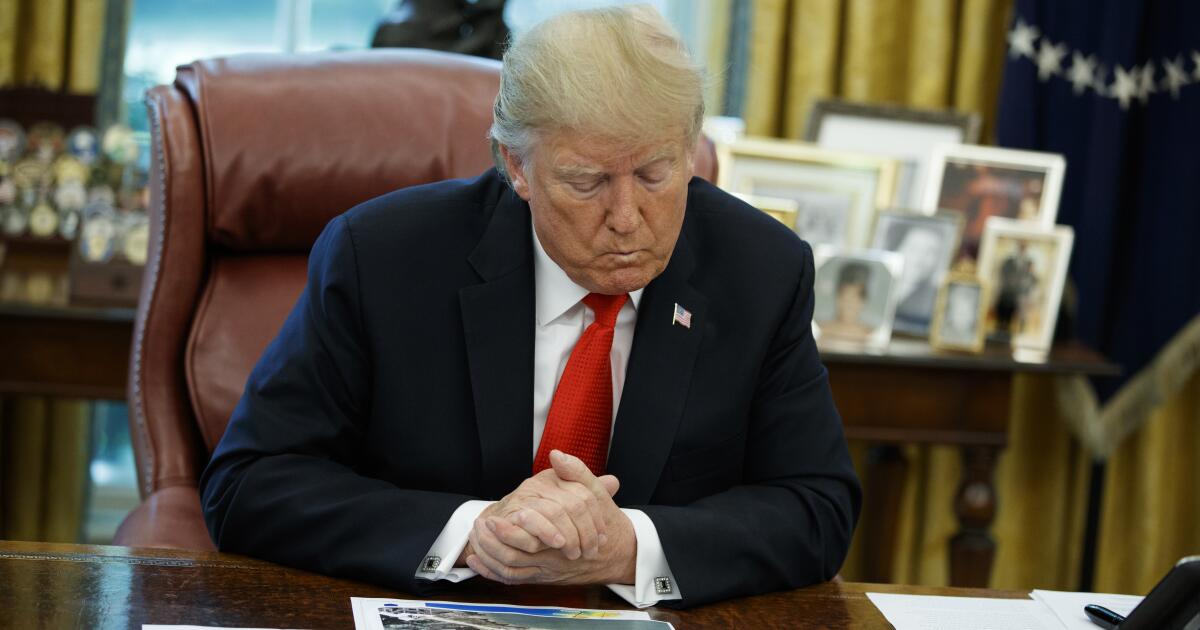During Donald Trump’s first term as president we witnessed his administration’s efforts to curtail domestic environmental regulations and the United States’ withdrawal from the Paris climate agreement. But few people appreciate just how much worse and deeper the damage to environmentalist goals is likely to run should he win a second term.
The Trump administration was very friendly to oil and gas business interests, unleashing a regulatory rollback of long-standing restrictions on fossil fuel extraction and consumption. In addition to scrubbing all references to climate change from the White House and Environmental Protection Agency websites, it reversed an Obama-era ban on new oil and gas drilling in the Arctic National Wildlife Refuge and elsewhere. Trump also revoked safety regulations adopted after the Deepwater Horizon oil spill. (Both these efforts were later stopped or slowed in the courts.)
The first Trump administration also halted rules limiting air and water pollution. His EPA overturned bans on various pesticides, even when the agency’s own research demonstrated their harmfulness. Curtailment of air quality regulations between 2016 and 2018 resulted in a 5.5% increase in fine particulate air pollution, reversing the 25% decline that had taken place under Obama.
As bad as all this was for the environment, in a second Trump term the changes won’t just be related to policy. Trump’s loyalists will aim for wholesale institutional destruction of environmental regulatory capacity, not just suspending Biden-era funding for green infrastructure.
In other words, the goal won’t be to just change a policy here or there, but to fundamentally cripple the ability of environmental regulatory agencies to perform their designated functions to such an extent that if a later administration wished to impose stricter standards, officials would find it impossible to do so. The recent ruling by the Supreme Court overturning Chevron U.S.A. vs. Natural Resources Defense Council, which invalidated judicial deference to agency regulatory decisions, will only make this easier.
A series of tabletop scenario simulations run in May and June by the Brennan Center for Justice, a nonpartisan, pro-democracy research center based at New York University, made it clear that a second Trump administration is likely to aim at root and branch destruction of agency power in a variety of respects. The first step will be to revivify “Schedule F,” an executive order from October 2020 that removed protections for civil servants perceived as disloyal to the president, and use it to reclassify tens of thousands of such workers as political appointments. Then the administration will fire them and replace them with anti-regulator or industry cronies. Agencies’ legal offices and inspectors general, whose role is to prevent the implementation of unlawful orders and to root out corruption, will likely be among the first targets. The result will be systematic evisceration of the expertise, institutional memory and guardrails against malfeasance within these agencies.
In addition to going after employees at environmental agencies, the Trump administration will also seek to suspend research that provides evidence in support of environmental regulation, such as greenhouse gas emission monitoring conducted by the National Oceanic and Atmospheric Administration, which in addition to providing weather forecasts is one of the main climate change research entities within the federal government. If Trump cannot convince Congress to defund certain agencies, he may order them moved to remote corners of the country to push its employees to quit. Destroying the agencies will ensure that if Trump is ever replaced by a more environmentally friendly president, the new administration will be unable to reimpose sensible environmental regulation because the administrative capacity to do so will no longer exist.
The courts, now packed with Trump appointees, are unlikely to protect against such efforts as they did during his first term, when the judges were still mainly Obama and Clinton appointees. Litigation is anticipated to be very limited in its capacity to do more than slow down a second Trump administration, which is likely to be far more focused and strategic than the first one. (As one person in the Brennan Center simulations put it: “This time they’re going to know where the door handles are.”)
Finally, a second Trump administration will almost certainly pull back from international efforts that are essential to biodiversity preservation, greenhouse gas emissions mitigation, oceanic plastic abatement and space junk prevention. Even Trump’s ambition to set up trade barriers to protect American industrialists from foreign competition is likely to be destructive, because it will slow the global rollout of new technologies capable of addressing environmental concerns, such as solar panels and electric vehicles, if they happen to be produced in China or elsewhere overseas.
For Trump’s “America First” supporters that might sound like a feature rather than a bug. But four years of institutional vandalism would end American leadership on the world stage. The credibility built up since World War I would vanish as the world’s largest economy ignores the world’s largest problems.
Nils Gilman is the executive vice president of the Berggruen Institute.
